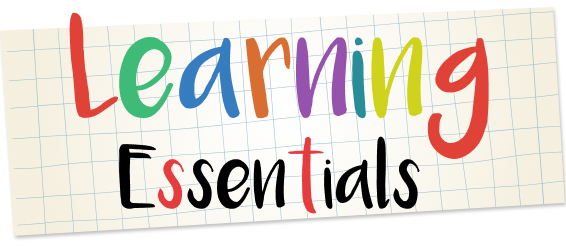
Forces and Interactions Essential Activities for Kindergarten
Videos
(1/4)
Energy and Forces
Science is cool and fun. Its everything you see all day around yourself, outside, inside your room, in your house, science is everywhere. Science is added as a subject at the very early standards. The basics concepts start from here and then they reach the high standards as the standards increase.
At the beginning level, the most basic things that are needed to be taught to the kids are force work and energy. They form the very basics of science and these concepts must be made crystal clear at the beginner level. Let’s start by asking a very simple question. How are we able to move stuff around? The answer is very simple we use energy and force to do all the work that we do.
Energy
It is the ability to move or do work.
Force
A force is either a push or a pull on an object. It is the energy that we apply on an object to make it move.
That’s a small tutorial on force and energy for kids. You can also watch some more science videos for kids that will also help in teaching your kid better.
In this instructional video, students continue to learn about energy with a focus on wind energy. At the beginning of the video, two children fly a kite. The kite is flying beautifully in the air, but after a time it falls to the ground. Ask your students why that happened.
The teacher reminds students that energy is the ability to move or do work and that wind energy would help the children fly the kite. He explains that there are different kinds of energy, and in this video, he explains that wind energy is invisible. You can’t see wind, but you can see what wind does.
The teacher demonstrates two experiments with wind that parents and teachers can easily replicate in the classroom. Watch the teacher begin the experiment. Pause the video. Ask your students to predict what is going to happen when wind energy is used to move an object or do work.
This video is a great resource for science classes. Students will enjoy the experiments and be ready to try some of their own!
We have seen adults confused between push and pull for their whole lives. This happens when the concept from childhood are weak. So, if you don’t want your kid to pulling a door that clearly says PUSH, you must make the difference crystal clear to them.
Before that, we need to learn some other concepts too, which is about force and energy. Whenever an object is moving we say that it is in motion and to put an object in motion some force needs to be applied to it. Force is the energy that enables the object to move. Now this force can be either push or pull. The key difference between push and pull is that we when we apply force on an object to move it away from ourselves we say that we are pushing it. However, when we apply force to move the object towards us we say that now we are pulling the object. The object will stay in its place unless or until an external force is applied to it which forces it to move and change its position.
After explaining the theory, you can use some real-life examples to further clear out the concept by pushing and pulling different things and asking the kid to identify the kind of force. This concept can save your kid from banging into many doors trying to push it when it says pull. So, keep it crystal clear.
When you are building the basics of science in your kid’s mind, you must be very clear and very easy to understand. Science basics start from force and motion. Both the two words are interconnected to each other. We will keep things simple and easy for kids.
Motion is when something changes its position and moves from one place to another. However, this motion is not caused by itself, some external energy is required for motion. This energy is called force. Force can be either push or pull. Push is when we move the object away from ourselves and pull is when we move the object towards us.
So, this was all the theory. To further clear out the concept do some simple yet fun activities at home or school, or simply let your child watch this video.
Worksheets
(1/8)
Down it Goes Worksheet

This is a good chance to explain the concept of gravity to your child. And, what better way to do that than by using this colorful and fun worksheet. First, explain to your child that force can pull things down. Ask them if they can give you examples of things coming down with force. Then, show them this coloring sheet. Instruct them to circle the pictures that show objects moving down pulled by force.
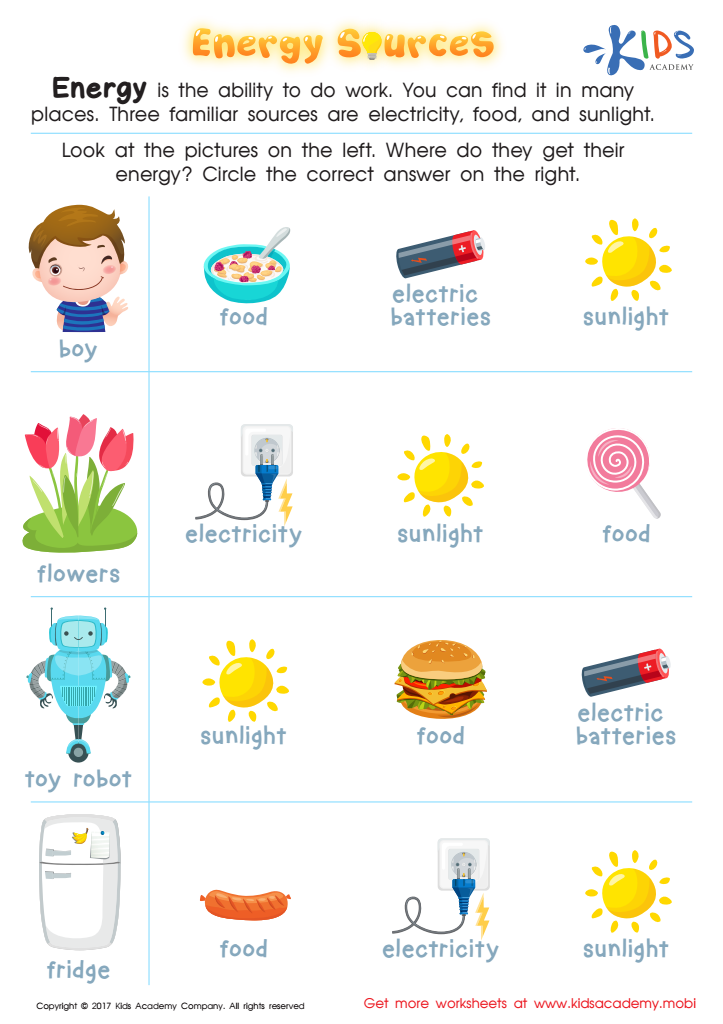
From the sun to batteries, energy fuels the world around us! Introduce the concept of energy sources to your mini scientist with this colorful, catchy energy sources worksheet PDF.
Using bright and engaging pictures, your child will evaluate the source of energy for each picture!
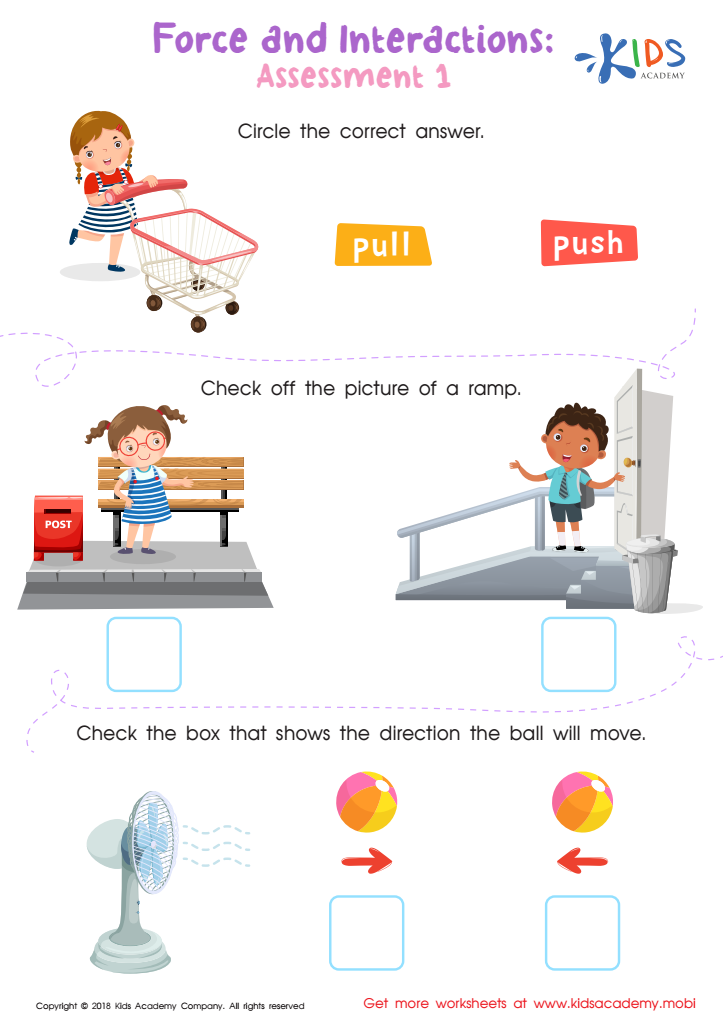
Now, if your students are accurately informed about the difference between a push and a pull, how a ramp functions, and how objects will move when exposed to wind, you can use this simple worksheet to test their knowledge. The first task is a simple «push or pull» task, where your kid must determine if the picture shows a push or a pull. The second task requires that your child correctly identify a ramp, and the third picture asks that your child identify which direction the ball will move.
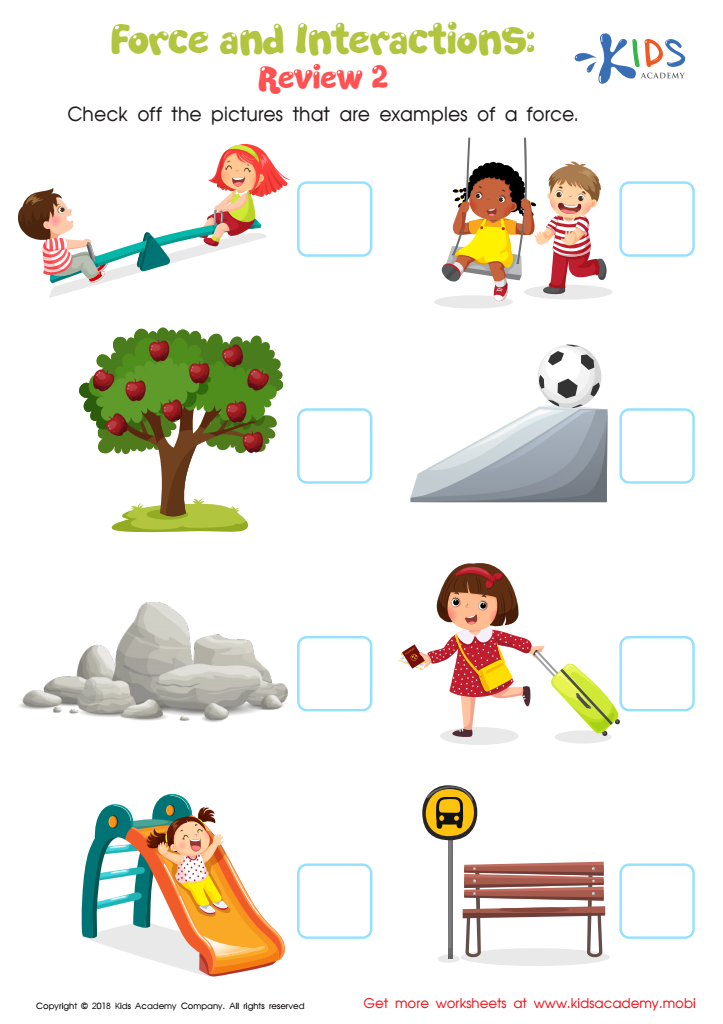
In this worksheet, your little ones will be required to check the pictures that show examples of a force. The coloring sheet shows eight pictures of children doing various activities, and objects in motion. Ask your child to name some of the activities in the pictures, and the objects, too. If they know what force and interaction is, your child should be able to easily identify which pictures show examples of force.
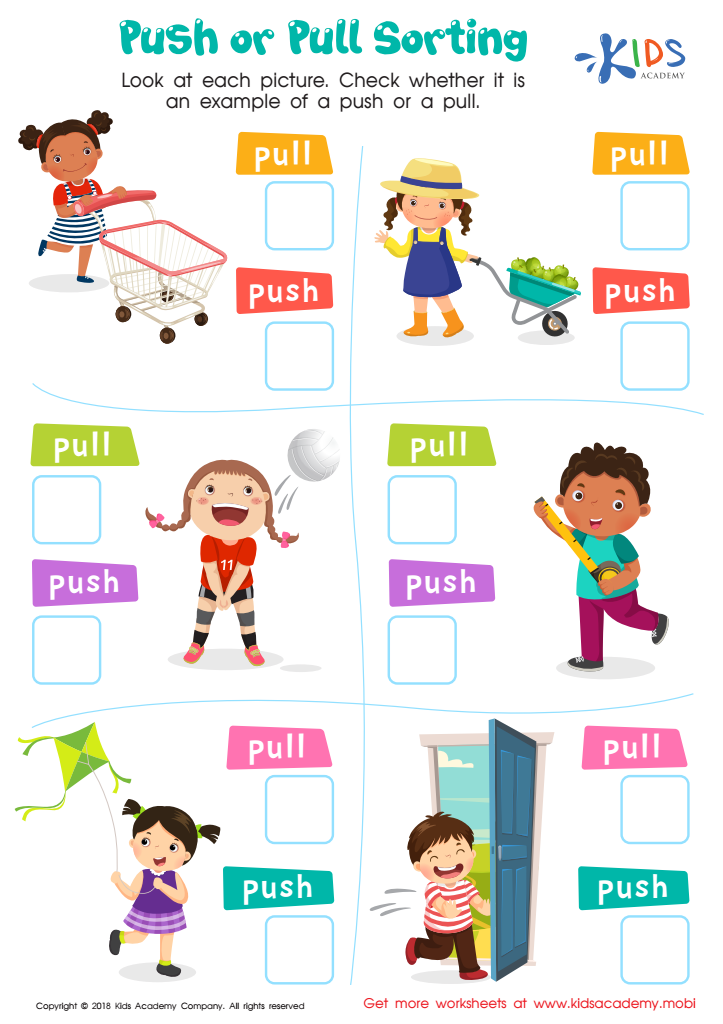
Ask your child if they know what it means to push something. Then, ask them if they know what it means to pull something. Can they give you some examples of a pushing force, and a pulling force? Look through the pictures in this worksheet with your little ones. Ask them to tell you what each child is doing in each picture. Then, ask your child to check whether it is an example of a push or a pull motion.
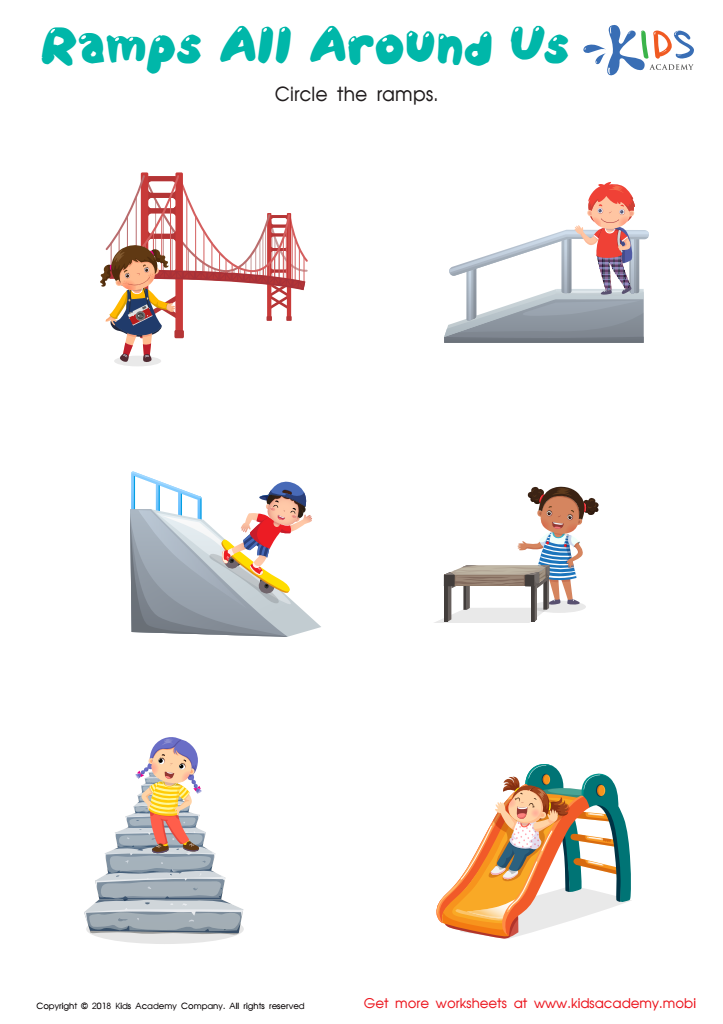
Does your child know what ramps are? Before you begin this exercise, it might be a good idea to first ask your kids if they know what ramps are. Then, you could ask them to give you examples of places where they have spotted ramps, and how they were being used. This worksheet has pictures of different objects, some of which are ramps. Ask your child to identify and circle the ramps in the picture.
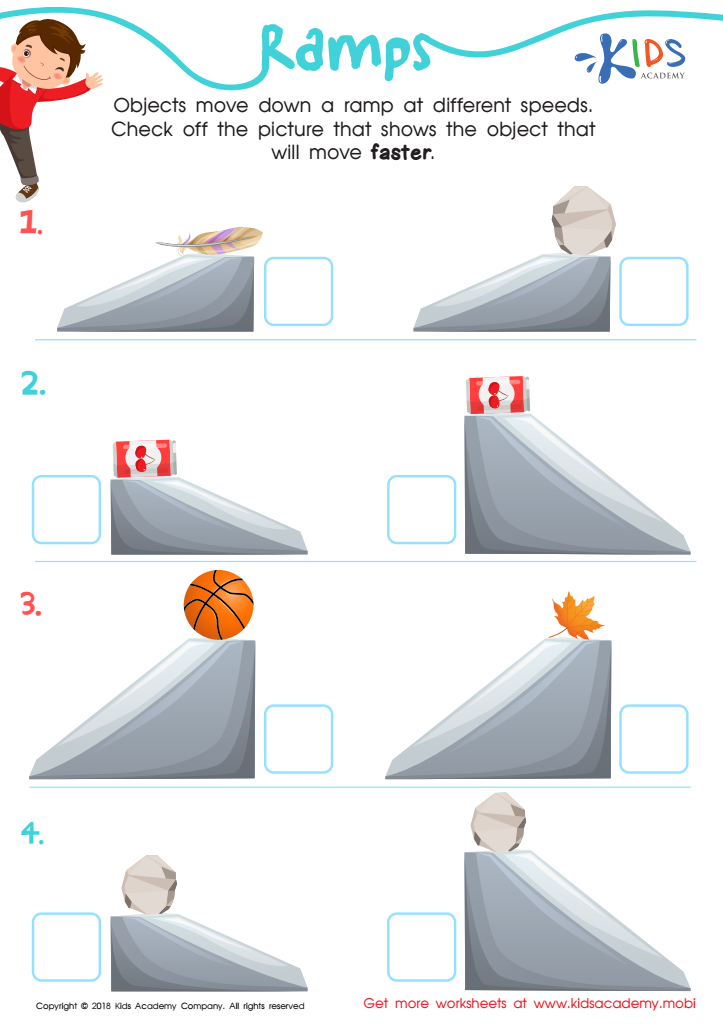
Objects move down a ramp at different speeds. If your child has seen a ramp before, and has observed how it was being used, they should find this worksheet easy to handle. A ramp has a sloping surface, and usually aids objects in moving downwards quicker. In this printout, there are pictures of different objects on different heights of ramps. Ask your child to check the pictures that show the object that will move faster.
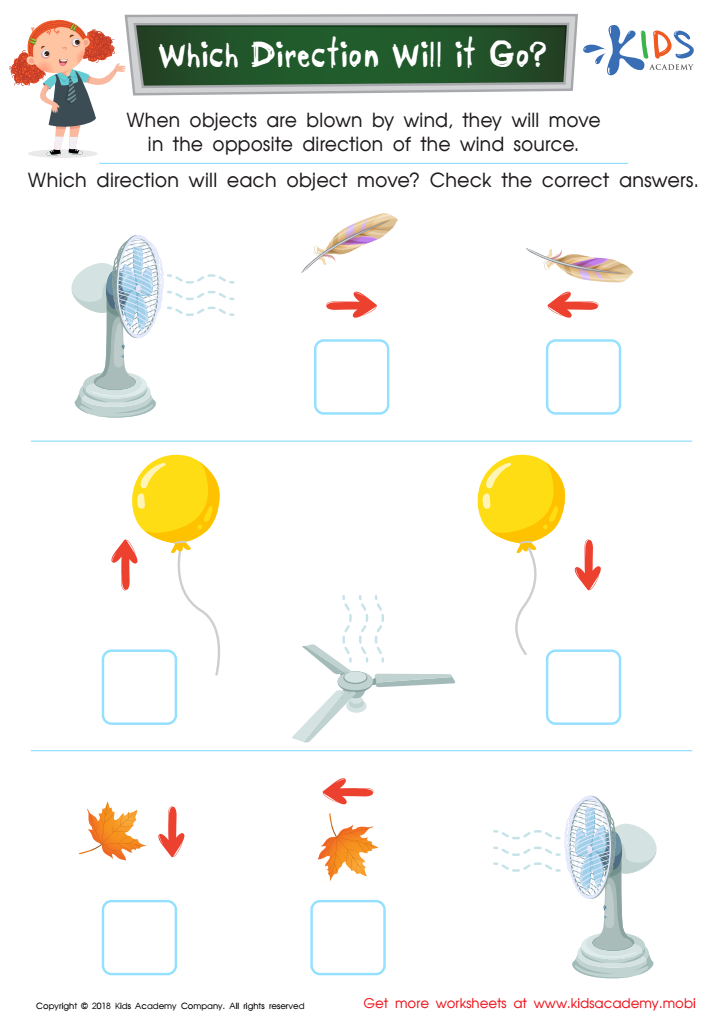
Explain to your students that when objects are blown by wind, they will move in the opposite direction from where the wind is blowing. In the worksheet, there are pictures of various wind sources, such as table fans and ceiling fans. Beside these wind sources are objects which are being blown by the wind. Your child’s task is simple; to correctly identify and check which direction each object will move.


